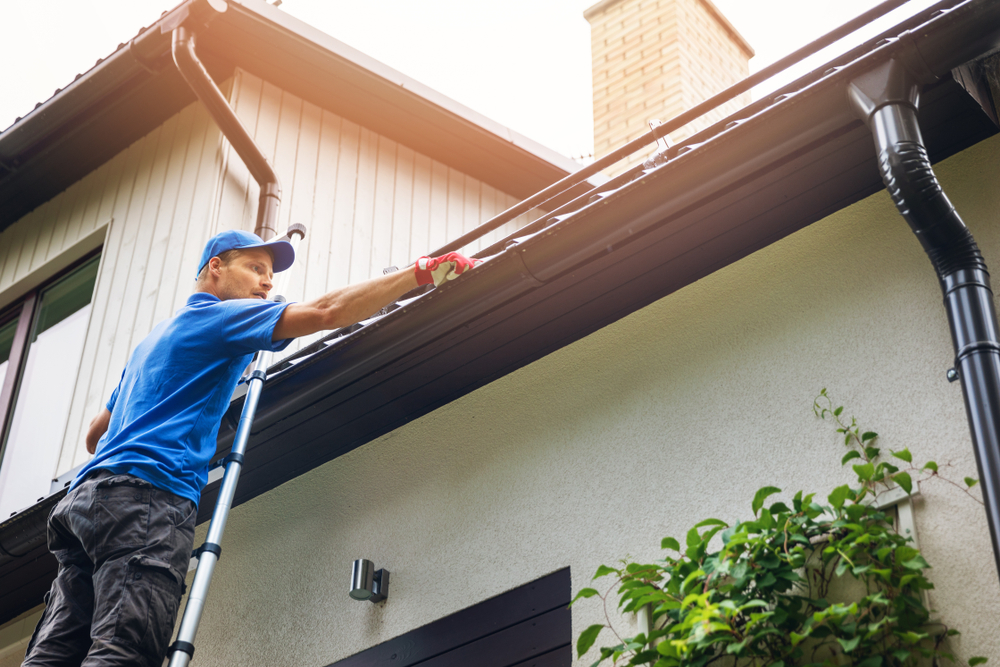
by siteadmin | Mar 27, 2020 | Gutters, Roof Cleaning, Roof Maintenance
Gutters are an important addition to your house, protecting your roof and landscaping alike from excess water damage. But as any homeowner knows, clogged gutters do no one any good and are truly a pain to clean. Letting them fill up with leaves and debris prevents free water flow, but trying to remove those leaves is a chore. How can you handle it?
Cleaning Gutters & Downspouts Safely in Spring, Texas
The most obvious concern when cleaning gutters is safety. After that, you’re probably wondering how to scoop out all the debris and what supplies you’ll need. Here are several important factors to consider as you prepare to clean out your gutter system:
- Protect your hands and eyes
- Use a sturdy ladder
- Find the correct equipment
- Clean the roof and downspouts
- Take preventive measures
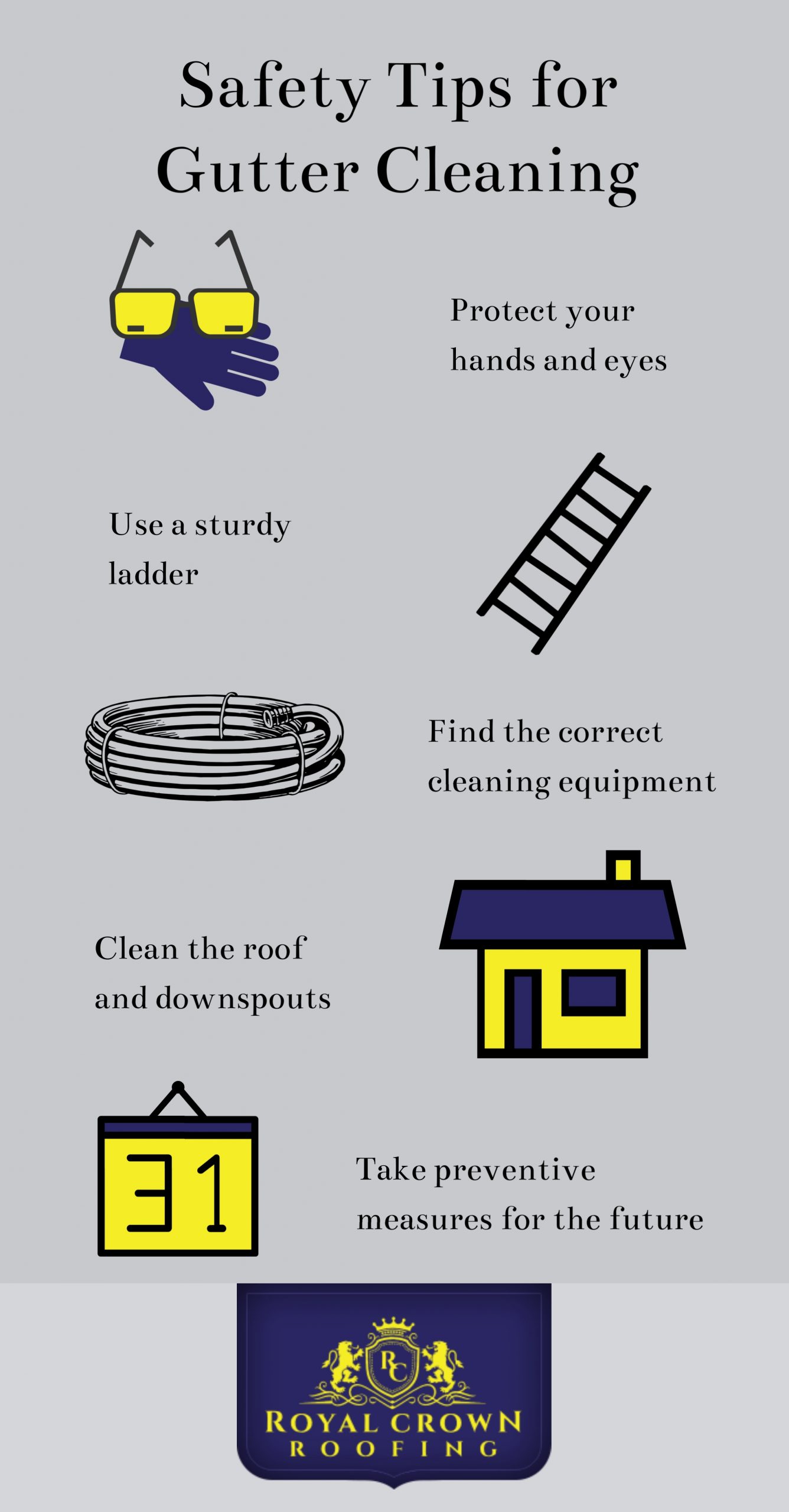
1) Protect Your Hands & Eyes
Simply put, you have no idea what’s hiding in those dirty gutters. Homeowners have experienced rats, bees, and more hiding under organic debris. And even if you escape having critters hiding in your gutters, who wants to scoop out dead leaves and stagnant water with their bare hands? Play it safe and protect yourself from whatever might be in those gutters.
2) Use a Sturdy Ladder
This should go without saying. A strong, sturdy ladder, ideally with a friend holding it at the bottom, is essential to a safe cleaning job. Use a new ladder and find a strong place on the ground to balance it while you work. And if possible, use a metal ladder rather than a wooden one. Wooden ladders tend to be less stable than their metal counterparts.
3) Find the Correct Equipment
Use a gutter scoop to remove debris, rather than scooping out the blockage with your hands. This streamlines the process and makes things more pleasant for you. Once you’ve removed the worst of the debris, use a trigger spray attachment on your garden hose to remove any remaining pieces and clean the gutters more thoroughly.
4) Clean the Roof & Downspouts
Freshly cleaned gutters won’t do much good if the downspouts are clogged too or the roof is covered in leaves that the next rainstorm will wash down. Spray down the roof and flush your downspouts with the hose to remove any and all potential blockage. This will ensure that rainwater cannot pile up on your roof again.
Pro Tip: Don’t walk on the roof during a gutter cleaning session! The roof will be slick from the garden hose and dangerous to walk on. Stay on the ladder while you work.
5) Take Preventive Measures
Finally, don’t let your gutters get too clogged up. Plan on cleaning your rain gutters at least twice a year, more often if you live in an area prone to falling leaves. A few minutes of work could save you a lot of trouble later on.
Keeping Your Spring, TX. Roof in Good Shape
Cleaning gutters is no one’s favorite chore and must be done with care. However, the payoff of a clean, solid roof is absolutely worth it. Make sure to check your gutters periodically and clean them clear to prevent costly damage later on.
Connect with us to schedule your free roof inspection today!
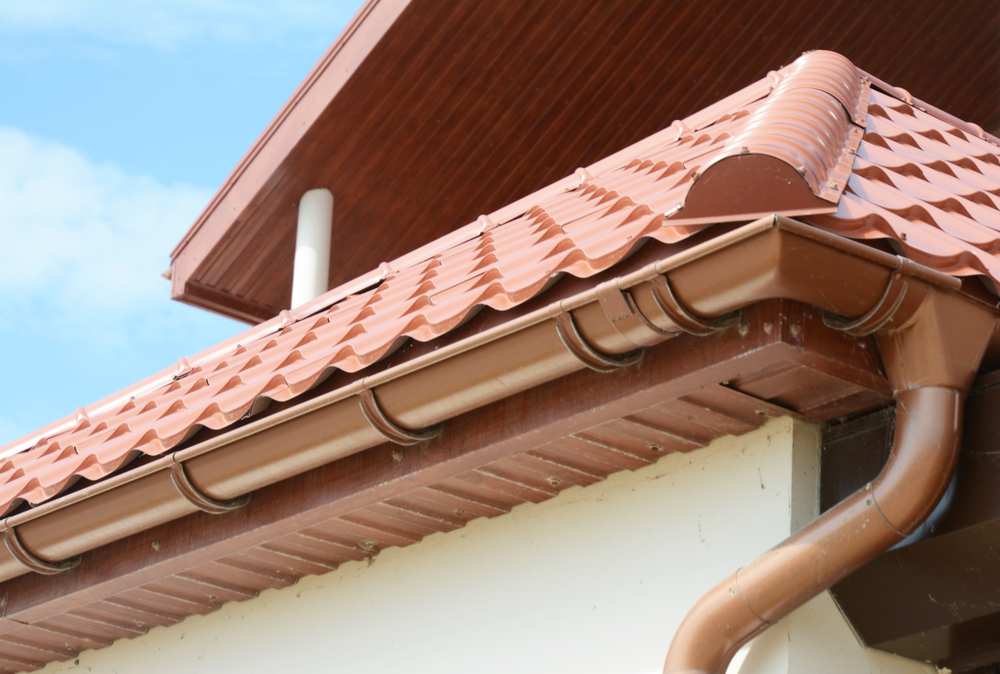
by siteadmin | Mar 20, 2020 | Gutters, Homeowner Questions, Roof Maintenance
What comes to mind when you think of a roofing project? Like most homeowners, you’re probably thinking about materials, colors, energy efficiency, and weather resistance. All of these are important parts of redoing your roof. However, you might have forgotten a piece of equipment that helps ensure your new roof will last a long time: gutters.
Gutters may seem a bit cumbersome at times as they fill up with leaves, attract birds that leave empty nests behind, or break and pull away from the roof’s edge. You may have even encountered roofing contractors who advised against having gutters installed. However, properly installed gutters can go a long way toward ensuring that your new roof lasts. Here is a closer look at gutters and whether or not your new roof needs them.
Advantages
Gutters primarily keep rainwater from bogging down your roof and damaging its foundation. With their specially designed slopes, they divert water runoff into a spout or to a safe place on the ground, keeping your roof clear of standing water.
This function also helps the ground around your home. When water flows freely off the roof, it can gradually erode the soil around your home and damage your plants or even compromise your home’s foundation over the years. Gutters divert the water where it can’t do that kind of damage.
Disadvantages
In some climates, gutters may not be necessary. For instance, in regions with very low annual rainfall, there isn’t enough water for gutters to be worth it. Houston definitely does not fit this description, however. Houston-area homes will rely heavily on gutters to divert rainwater throughout the year.
Of course, any homeowner knows about the work that gutters can require. From chasing away pests nesting in them to cleaning out leaves that clog them up, there’s always plenty to do to keep your gutters clean and working. This time commitment can be frustrating, but to keep your gutters doing their job, it’s important.
Pro Tip: Improperly installed gutters may splash the edges of your roof, promoting stains or even mold. Only trust an expert to install your gutters and keep your home in good shape.
Keep Your Gutters in Good Shape
Every now and then, take the time to clear out your gutters of any accumulated debris. This will allow water to flow freely in the next rainstorm and protect your roof from damage.
Better yet, reduce maintenance even further by having gutter guards installed to block debris while still allowing water to flow. While this metal mesh covering isn’t perfect, it’s definitely superior to open gutters. Talk to your roofing contractor about your gutter guard options.
Give Your Roof a Long Life
Gutters are more than just a cosmetic addition to your roof. The help they provide in keeping rainwater from ruining your home’s structure is invaluable. With expert installation and proper maintenance, your new gutters will be more than worth it.
Connect with us for more information on home improvement and roofing.

by siteadmin | Mar 6, 2020 | Homeowner Questions, Roof Inspection, Roof Maintenance
Are you in the process of getting your roof repaired? Do words like “gable” or “truss” sound like a foreign language? Understanding roofing terms and how they work together in your roof system will help you make sense of the repair estimates given by roofing contractors.
Defining Important Parts of a Roof
Being able to identify the different parts of a car is comparable to your roof. If you’re unsure of how the crankshaft relates to the engine, a car diagnosis could be confusing. The same is true for the roof of your home. Becoming familiar with common roofing terms listed on estimates or inspections will help you take better care of your roof.
- Decking
- Drip Edge
- Flashing
- Gable
- Ridge Vent
- Saddle
- Shingles
- Truss
- Underlayment
- Valley
- Vent Pipe
1) Decking
The roof deck is the layer of roofing material between the frame of your roof and the outer roof shingles or coating. Besides the trusses and joints that make up the roof frame, your decking is the primary foundation of your roof. Types of deck material include steel, concrete, cement, and wood.
2) Drip Edge
Drip edges are metal sheets, usually shaped like an “L”, that are placed at the edge of your roof. Contractors install these metal sheets to direct water away from the fascia (roof edge) and into the gutter system. Older homes may not drip edges installed, but it is now required for all new homes to include drip edges in their roof systems.
3) Flashing
Flashing is the term used to define materials that are placed in specific areas on your roof to protect against leaks. Usually made of rust-resistant metal, flashing is the best way to weatherproof your home. Similar terms may include base flashing, counter flashing, step flashing, or valley flashing. Each relates to the spot on the roof where the metal strip will be installed.
4) Gable
A gable roof is the most common roof shape when thinking about roof types. The gable is the triangular portion of your roof where the edges of roof sections intersect. Similarly, a gable wall or gable end refers to the gable and wall directly underneath.
5) Ridge Vent
Compared to turbines, ridge vents are the preferred method for allowing hot, humid air out of your attic. A ridge vent is installed along the top of each roof peak and acts as a screen for interior air flow. While allowing hot air to escape from the attic, it keeps outside elements from leaking in.
6) Saddle
A cricket or saddle on your roof primarily concerns the installation of chimneys. To divert water running down the chimney to your roofing material, a ridge structure (saddle) is installed around the high side of the chimney.
7) Shingles
Usually thought of as the most popular roofing material, shingles compose the outer layer of your roof. Otherwise known as asphalt or fiberglass shingles, each home’s shingles range in color, material, and shape. Roofing contractors nail each shingle together in an interlacing pattern to ensure long term durability for your home.
Pro Tip: There are numerous shingle types to choose from your home. Be sure to coordinate the appropriate roofing material with your home’s exterior design.
8) Truss
The truss of your roof is your roof frame. Usually built away from the building site, a roof truss consists of three interlocking parts: rafters, joists, and jacks. In today’s new homes, you can find a number of different roof truss styles such as dual pitch, inverted, flat, and hip roofs.
9) Underlayment
The underlayment of your roof is a waterproof barrier placed between your roof deck and shingle material. Although shingles are your first defense against water damage, underlayment provides extra protection in case of missing shingles. A roofing underlayment can be found in there different materials including asphalt-saturated felt, synthetic, and rubberized asphalt.
10) Valley
Your roof valleys refer to the parts where your sloped roof meets, usually forming a V angle where water runs off. Depending on the design of your roof, there are three different types of valleys including woven, closed, and open valleys. It’s important to inspect your roof valleys periodically to guard against unwanted water damage.
11) Vent Pipe
Did you know plumbing has a part in your roof’s design? A vent pipe is an air pipe installed on the roof of your home to allow gases and odors to escape from your plumbing lines.
Roofing Experts in Spring, TX
Every part of your roof, even the drip edge, comes together to create a protective shield over your home. Thanks to the ingenuity of roof design, you can trust that your home won’t be exposed to weather or allow moisture to leak inside. If you’re starting to notice problems with your roof, schedule a free consultation with one of our roofing professionals. Catching roof problems early on could guard against extensive damage before it’s too late.
Looking for more roofing tips and advice? Connect with our roofing experts on social media!
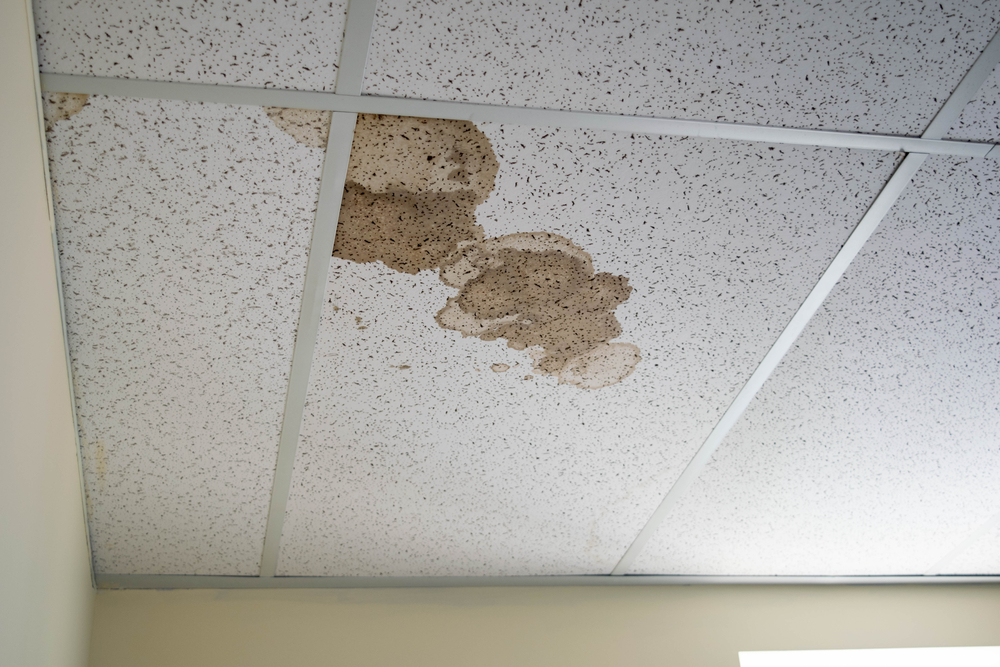
by siteadmin | Feb 28, 2020 | Commercial, Roof Maintenance
If you own an office building or warehouse facility, taking care of your roof will result in long term durability. While many damages might be noticed from the interior building, roofing experts recommend roofs to be inspected twice a year. From water damage to sealing around your HVAC units, it’s important to follow a commercial roof maintenance checklist to ensure issues aren’t overlooked.
5 Step Commercial Roof Checklist
Despite your type of roofing system or materials, there are important considerations to remember when performing maintenance on commercial roofs. Certain types such as flat roofs, sloped roofs, or metal roofs may require special attention from a professional roofing company. That being said, there are five factors that can be applied to every roof type. Whether you schedule a roof inspection or decide to perform a self-inspection, be sure to keep the following checklist in mind.
- Check the interior for water damage
- Look for damage to the roof
- Inspect drains and flashings
- Watch out for exterior structural damage
- Reexamine previous repairs
1) Check the interior for water damage
Every regular roof inspection should start inside. Examine the ceilings and walls to check for water stains, drips, leaks, or peeling paint. By checking the interior first, you can see whether the issue is coming from the roof or a different source.
2) Look for damage to the roof
Depending on the roofing type of your commercial building, visible damage may vary. Be sure to look out for the following in each type of roof.
- Flat Roofs – Holes, granular loss, stretching, punctures or blisters.
- Sloped Roofs – Missing, curling, or bending of roofing materials.
- Metal Roofs – Corrosion, popped screw heads, or bent panels.
Pro Tip: Don’t forget to look for mold or mildew growing on the interior or exterior surfaces of your roof. Neglecting to keep bacteria away from your roof could result in extensive repairs.
3) Inspect drains and flashings
Whether it’s a gutter system, flashing, drip edge, or sealants it’s important to check the drainage systems put in place. If debris or dirt starts to pile up, it could compromise the system and allow water to build upon your roof.
4) Watch out for exterior structural damage
If your building has installed HVAC units, skylights, vents, pipes, or chimneys on the roof, be sure to check for damage periodically. Without adequate care, exterior structures can cause irreversible damage to your roof surfaces, including rusting or rotting.
5) Reexamine previous repairs
Last but certainly not least, don’t forget to inspect past repairs. If you’re unsure of what repairs may have taken place, get in touch with your maintenance supervisor or consult with a roofing expert. Moving forward, be sure to record any repairs that you’re aware of so future maintenance can be performed correctly.
Quality Roofs for Commercial Buildings in Spring, TX.
An important part of taking care of your building is preventative maintenance. By following our commercial roof maintenance checklist, you can be confident that your roofing system is doing its job. In turn, you can reduce the chance of downtime in your workplace and ensure future success.
Is your commercial roof showing signs of damage? Connect with our licensed roofing experts to evaluate the state of your roof.
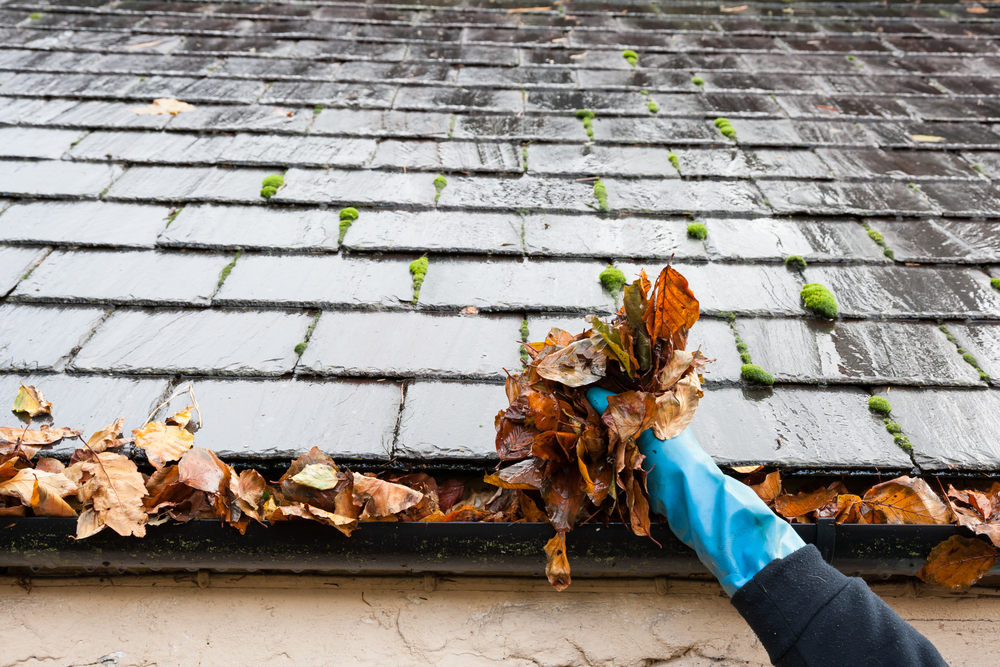
by siteadmin | Feb 21, 2020 | Roof Cleaning, Roof Maintenance
According to groundhog Punxsutawney Phil, spring is around the corner sooner than you think. If you’re a homeowner, the spring season might be a reason for you to start completing those home improvement goals. With the arrival of warmer weather and longer days, it’s a great time to organize and clean your home, including your roof. Consider these roof cleaning tips to jumpstart your spring cleaning routine this season.
Roof Cleaning Advice in Spring, TX
Whether you’re a first-time homeowner or not, cleaning your roof is an important task of maintaining your home. If you’re not regularly cleaning your roof, your home could suffer from subsequent damage, moss growth, or premature depreciation. Consider these 3 cleaning tips to keep your roof in good shape all year long.
- Keep your gutters clean
- Inspect for loose shingles
- Rinse dirt off with a garden hose
1) Keep your gutters clean
Did you know that gutters are one of the most important defenses against roof leaks? However, if leaves and small twigs begin to pile up, your gutter system will get clogged and become unable to drain water. This spring season, clean your gutters and remove any debris that has started to accumulate to protect your roof.
2) Inspect for loose shingles
Cleaning and inspecting your roof for damage tend to go together. Failing to do so could cause ceiling leaks, or in more serious cases, extensive damage to your roof. Before you can actually wash mold or mildew off of your roof, it’s important to check for loose shingles. Whether you do a self-check or hire a professional, inspecting your roof should be apart of your home maintenance.
Pro Tip: Request a free inspection from our trusted roof contractors to determine whether loose shingles are due to deterioration or a more serious, underlying issue.
3) Rinse dirt off with a garden hose
Have you noticed black streaks or moss growth on your shingles? Black streaks are usually the first sign of a dirty roof. While they may look like mold, these roof imperfections are actually algae colonies that form in your shingles and feed on moisture. Using a garden hose with a spray nozzle, and a push broom, wash your roof with an algae-resistant roof cleaning agent to get rid of debris.
Residential Roofs Need Regular Cleaning
Whether you hire a cleaning service or decide to clean your roof yourself, the state of your roof can’t be overlooked. If you have an asphalt shingled roof, our roofing experts recommend yearly cleaning to keep your roof maintained. From fallen tree limbs to algae growth, it’s important to keep your roof clean to extend its longevity.
Do you suspect a problem with your roof? Connect with our roofing team for a roof cleaning solution or roof repair for your house.

by siteadmin | Jan 3, 2020 | Roof Cleaning, Roof Maintenance
The new year is a great time to reevaluate your progress and set goals for the future. As you start setting resolutions for 2020, don’t forget to think of ways to take care of your home, especially your roof.
Roof Maintenance Goals
Setting new year goals is important for your personal life, but what about home improvement? In order to extend the lifetime of your roof, it’s important to practice regular maintenance and preventative care. Make sure these roof maintenance goals are on your list this year!
1. Clean Your Roof
Our top roofing contractors recommend homeowners to clean their roofs at least once a year or as needed. Without proper care, extra moisture can cause mold to grow on your roof shingles or tree limbs can cause leaks. If you don’t have the tools necessary to clean your roof, be sure to contact a professional so that you can avoid costly repairs.
2. Empty Your Gutters
The gutter system attached to your home is an essential part of protecting your roof. This year, be sure to clean your gutters at least 3-4 times a year, especially after a major thunderstorm. If your gutters are kept clear of leaves and debris, runoff water will be able to drain properly which will keep your roof dry.
Pro Tip: Did you know that excess water in your gutter system could be a breeding ground for mosquitos and other pests? Protect your home by having your gutters cleaned regularly.
3. Schedule a Roof Inspection
When is the last time you inspected your roof? In addition to a professional roof inspection, homeowners should individually inspect the quality of their roof at least twice a year. Instead of waiting until issues cause extensive damages, keep the condition of your roof system under control with regular inspections. Contact one of our associates to schedule your free inspection!
Lifelong Roof Protection
No matter what may have transpired in 2019, the start of a new year welcomes a fresh start and room to achieve your goals. Due to the weather conditions in Houston, many homeowners choose to take care of their roof during the spring and fall months. Whatever time you choose, it’s important to make roof maintenance a priority for your home. By ensuring protection, you will be able to extend the life of your roof for years to come.
What are your new year’s resolutions? Share with us on social media!
Page 12 of 13« First«...910111213» 









